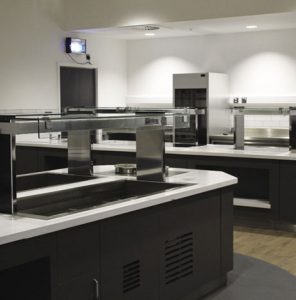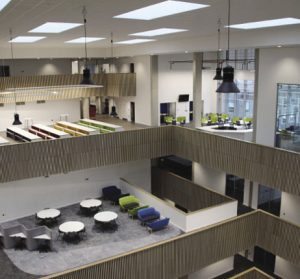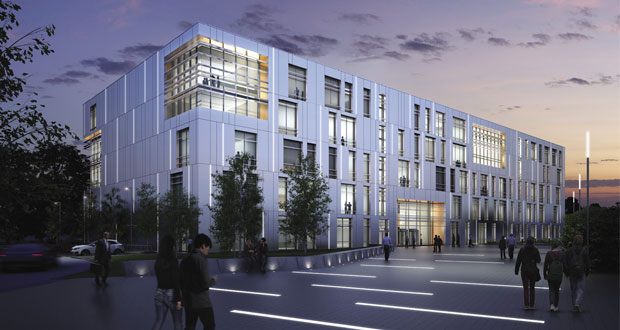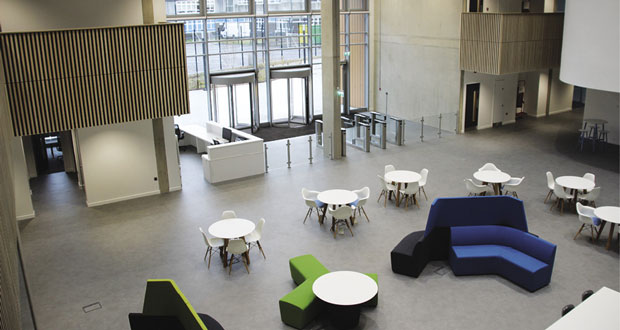Toby Buckley, Managing Director of REL Building Services, explains the benefits the design and installation of mechanical and electrical services can bring to educational facilities
Traditionally, schools and colleges were relatively simple structures, but within the last 10 years design trends have shifted dramatically. This has resulted in far more sophisticated buildings, incorporating diverse facilities and advanced technologies that can enhance the learning experience for students.
These changes have had a huge impact on building services, fuelling the need for more advanced mechanical and electrical (M&E) solutions that can drive efficiencies across an entire project.
EARLY ENGAGEMENT
To achieve these efficiencies, M&E contractors must be involved in projects during the early pre-construction stage to help develop the design. In some cases, that could be up to a year before the project goes to site.
 Commercially that can be a challenge, but this investment in time offers benefits too. Early engagement means M&E contractors can work more closely with building managers, design teams and architects to develop a solution that is tailored to meet the brief. In doing so, any potential issues can be identified at the beginning, saving time and improving efficiency during installation.
Commercially that can be a challenge, but this investment in time offers benefits too. Early engagement means M&E contractors can work more closely with building managers, design teams and architects to develop a solution that is tailored to meet the brief. In doing so, any potential issues can be identified at the beginning, saving time and improving efficiency during installation.
IMPROVING AIR QUALITY
One of the most important considerations in an educational facility is ventilation. Growing concerns regarding air quality in classrooms have been addressed by new Government guidelines which came into force in 2018(i). These were introduced to minimise the risk of classrooms overheating and to control carbon dioxide (CO2) levels (see box on page 2).
In practice, this will require the greater use of systems which combine both mechanical and natural ventilation. However, this presents numerous challenges as heating and cooling systems can be difficult to integrate and consume a lot of energy – issues which will need to be overcome in the early design stages.
ENHANCING AESTHETICS
The aesthetics of the building’s interior is another priority for educational institutions. Traditionally, the ceiling was used to hide all the cabling, pipework and ductwork that was required to make a school function, but that people didn’t necessarily want to look at. But now, exposed ceilings are becoming the norm, not only because they improve the thermal massing of a room but offer a much more contemporary look.
This trend means that M&E contractors need to work more closely with clients, including building managers and main contractors, to ensure that the building services installation is as aesthetic as possible. Electrical, mechanical and structural elements must all be coordinated as part of the ceiling design, ensuring they are set out perpendicularly and installed as neatly as possible. Upfront design work, including the use of BIM forms a vital part of this process.
EXEMPLARY LEARNING ENVIRONMENTS
 Some of the biggest building design changes can be seen in the higher-education sector, largely driven by the need for more technical skills, creative learning spaces, and the latest technology.
Some of the biggest building design changes can be seen in the higher-education sector, largely driven by the need for more technical skills, creative learning spaces, and the latest technology.
One example is a new facility that was built by ISG for Richmond-upon-Thames College (ii) – where REL was responsible for the M&E solution.
The £34 million scheme comprises a new five-storey teaching block, which spans around 161,000 sq ft and is targeted to achieve a ‘BREEAM excellent’ rating. It opened in Spring 2020 and can accommodate 3,000 students.
Diverse facilities have been incorporated into the building, including business incubation space, a 160-seat theatre, and advanced learning environments featuring TV studios, a 3D prototyping fabrication laboratory and a digital golf studio. A chef’s academy, with full commercial kitchen and a bookable restaurant space have also been created, alongside a spa and wellness centre.
Located at the college’s Twickenham campus, which remained operational throughout the work, the scheme was awarded via the Pagabo framework, which drives efficiencies and best value across public sector procurement.






